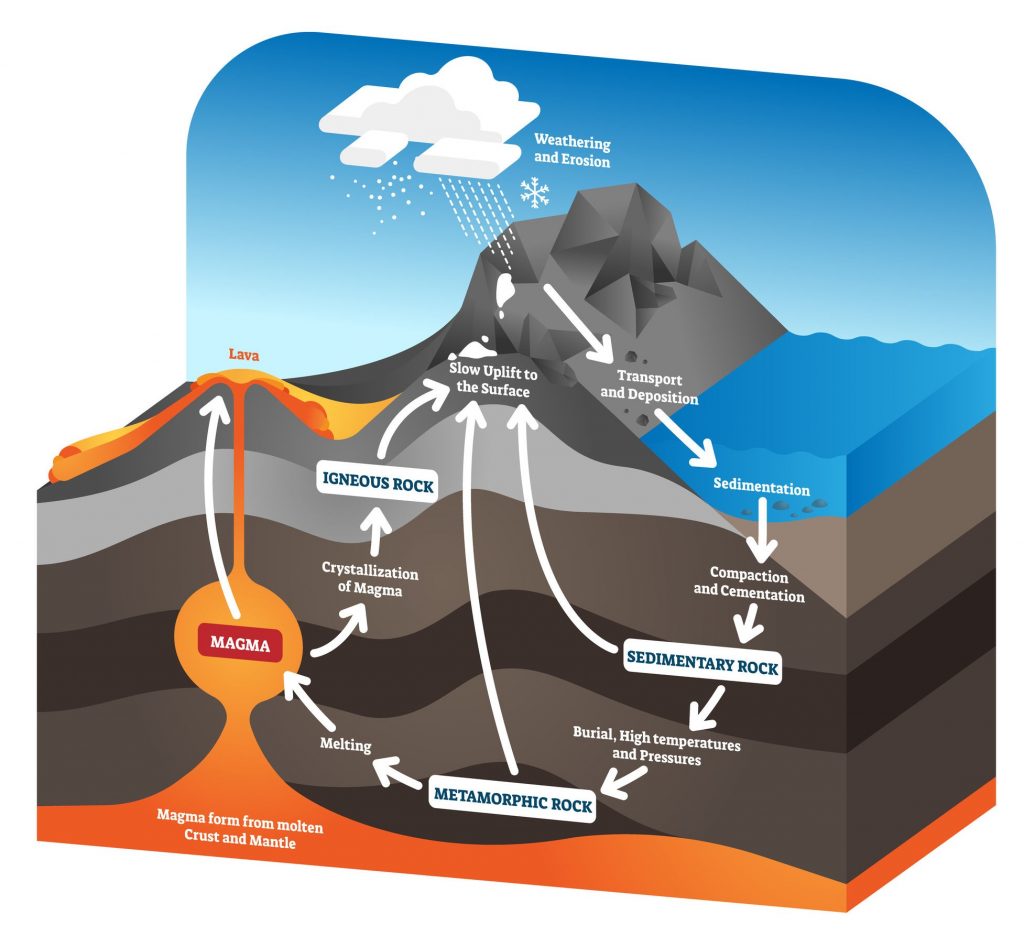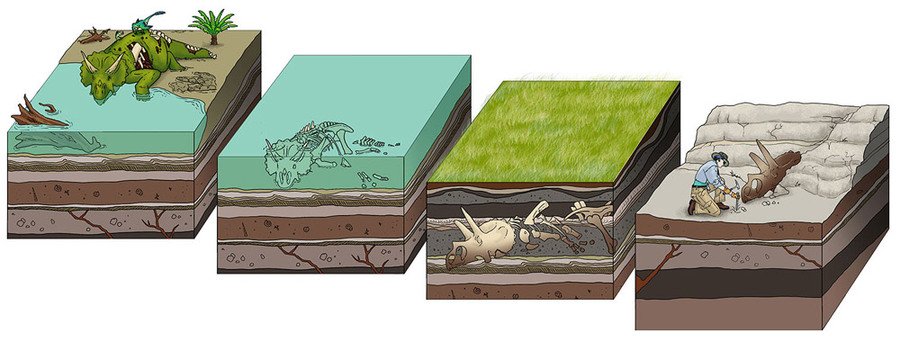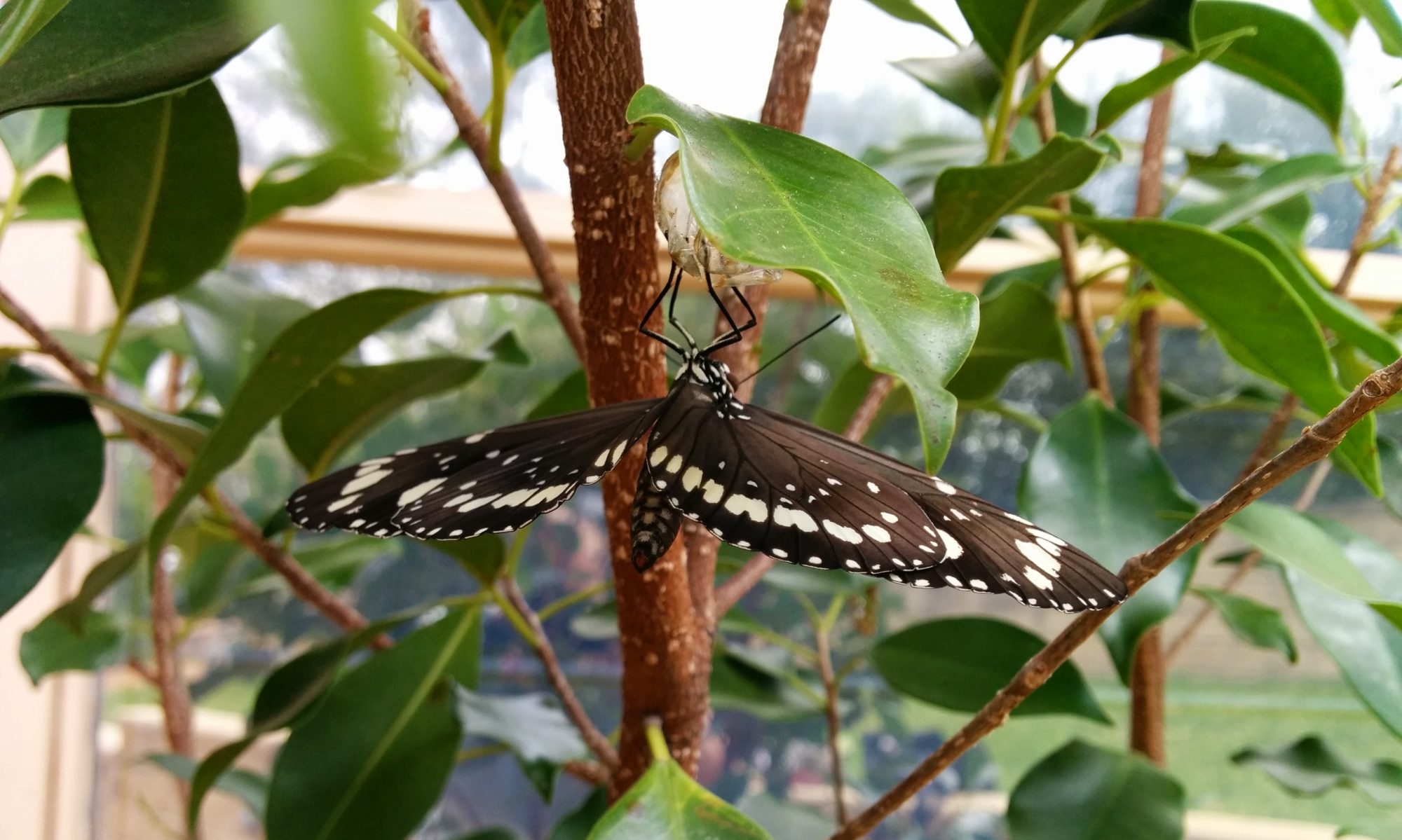Rocks and Fossils are fascinating to kids and adults alike. The following information will help you teach these topics to your students.
Rocks are naturally occurring solid mass or aggregate of minerals. They are categorized by the minerals included, the chemical composition and the way in which it is formed. Rocks are usually grouped into three main groups:
- igneous rocks
- metamorphic rocks
- sedimentary rocks.

Fossils are more common in some kinds of sedimentary rocks than others. There are many factors that can contribute to the likelihood of an organism being preserved as a fossil. Fossils are most common in limestones. That is because most limestones consist partly or mostly of the shells of organisms.

Australian Environmental Education Rocks and Fossils resources
Australian Dinosaurs
Dinosaurs first evolved in the Triassic Period 245 million years ago, yet no bones have ever been found in Australia from this time. Fossilised footprints discovered in southeast Queensland shows us that dinosaurs did indeed live in Australia during the Triassic period.
Geologic Timescale
The geologic time scale is a system of chronological dating based on the rock record. It classifies geological layers to describe the timing and relationships of events in geologic history. Over hundreds to thousands of millions of years, continents, oceans and mountain ranges have moved both vertically and horizontally.
Inside the Earth
The Earth began to take shape about 4.5 billion years ago, iron and nickel quickly separated from other rocks and minerals to form the core of the new planet. The molten material that surrounded the core was the early mantle.
History of Minerals
Minerals have played a vital role in human history, shaping economies, cultures, and technological advancements. Their study and use date back thousands of years, evolving with human civilization. Below is a brief journey through the history of minerals and some fascinating facts about them.
Plate Tectonics
A tectonic plate is a massive, irregularly shaped piece of the crust. They are generally composed of continental and oceanic crust. Plate can vary greatly in size, the Pacific and Antarctic Plates are among the largest.
What are Fossils?
Fossils are our window into the past. The word ‘fossil’ comes from the Latin word fossus, which means ‘dug up’. This refers to the fact that fossils are the remains of past life preserved in rock, soil or amber. Generally, the remains were once the hard parts of an organism, such as bones and shell although, under exceptional circumstances, soft tissues have also fossilised.
What is Soil?
Soil is the thin layer of material covering the earth’s surface and is formed from the weathering of rocks. It is made up mainly of mineral particles, organic materials, air, water and living organisms—all of which interact slowly yet constantly. Most plants get their nutrients from the soil and they are the main source of food for humans, animals and birds. Therefore, most living things on land depend on soil for their existence.
Geoscience Australia has additional information and resources .
Find out whats new for you and your students with the latest Blogs from Australian Environmental Education.
- Plastic Free July
- Junior Riverkeeper
- Exploring the Underwater World
- World Wetlands Day 2025
- Violet Snails, nature’s floating marvels
Follow Australian Environmental Education on Facebook

